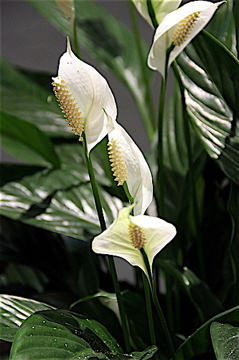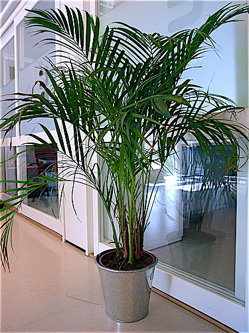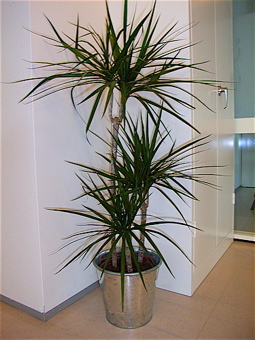|
Bringing oxygen producing plants into your home is a way to mimic the healthy lifestyle factors of longevity in humans from the longest lived cultures.Green oxygen producing plants are abundant in nature, especially in forests, jungles and coastal regions by the ocean (seaweeds, algae and marine phytoplankton make up the overwhelming majority of the worlds oxygen producing plants). If you've ever spent time in or near these settings, you'll know how refreshing and revitalizing they are! Oxygen and the air it is contained in, could be considered the most crucial nutrient to the human body because life can only last mere minutes without it.
The ratio of oxygen to other molecules in the Earth's atmosphere has been dropping over several decades. The majority of this problem is due to air pollution increasing and less to the fact that the forests and jungles of the world are being reduced by clear cutting (which should still be stopped). Areas of higher pollution, such as cities, have a lower percentage of oxygen in the air. I hope that these oxygen facts help illustrate the importance of bringing both oxygen producing plants as well as air cleaning plants into your home for life-span development. Dr. B.C. Wolverton, a former NASA research scientist, helped the agency look into how air purifying plants could be used onboard space missions to benefit the artificial environments onboard their spacecraft.This NASA Clean Air Study found that oxygen producing plants can be used to both produce oxygen as well as remove common harmful chemicals from the air and break them down into harmless organic byproducts into the soil, which the plants then use as food! These chemicals that are harmful to human health are off-gassed from common household items and products. Some of these items and the chemicals they release are found in synthetic carpets (releases formaldehyde), petroleum products (release benzene), toys, chemical cleaners, paint, furniture with synthetic components and everything else that is synthetic! All air cleaning plants will of course always produce oxygen, but here are some of the top ones that happen to have a high conversion rate of carbon dioxide (the waste product humans and animals exhale and that plants inhale) to oxygen. The major benefit of adding oxygen producing plants to your living and work space is an increase of productivity due to the maintenance of healthy oxygen levels in the blood. Top three oxygen producing plants:#1 Sprouts!: If you grow your own sprouts for food (especially sweet pea sprouts, buckwheat sprouts and sunflower sprouts) you will have a fantastic mini greenhouse effect in your living space. You also get supplemental oxygen orally by eating raw, living greens! 
#3 Areca Palm: This plant removes xylene and toluene from the air, but also happens to convert a lot of CO2 (carbon dioxide) to O2 (oxygen) during the daytime. Having four (shoulder high plants) of these per person in your household provides enough oxygen to survive on during daylight hours! They need to have dust and grime wiped off of their leaves once a week, or as often as daily if you live in a city with very bad air quality such as Delhi. Top three air cleaning plants:#1 Madagascar Dragon Tree a.k.a. Red Edged Dracaena: As a popular house plant that needs little attention, it best removes benzene, formaldehyde, xylene and toluene from the air. It cannot tolerate direct sunlight yet it does well in fairly well indirectly lit areas. It is more susceptible to becoming damaged from over watering than infrequent watering. #2 Warneck Dracaena: One of the most popular clean air plants, this one removes benzene, trichloroethylene, xylene and toluene from the air. #3 Peace Lily: This species (of which there are a variety of sub-species) thrives best in the shade and with only roughly one watering per week (must be chlorine free water) but never let the soil completely dry out. This easy to take care of house plant removes benzene, formaldehyde, acetone, amonia and trichloroethylene from the air. It also periodically flowers! The exact number of oxygen producing plants you'll need in your home is going to vary depending on:~how much time you spend in your home Clean air plants have varying needs.The ones I have listed above are fairly low maintenance. There are many other oxygen producing plants that can make a beneficial addition to your home, just always take into account the amount of work that they require to maintain their health. You'll want do to the following things with your plants: ~Avoid placing them in corners with stagnant or no air flow or by radiators that produce excessive heat which can damage them. The biggest benefit to incorporating these oxygen producing plants into your longevity lifestyle is going to be the improvement of air quality in your home.But another side benefit is going to be the therapeutic effect of having more greenery around you. The colour green has a soothing, healing effect and considering that it is the predominant colour in nature, people have a natural inclination to feel the most at ease in settings that contain this colour. It is one of the great ways to deal with stress. 
Another useful addition to these clean air plants is to have several room air purifiers that are also negative ion generators. This will create a micro climate in your home that rivals that of even some natural settings! Once optimal air quality in your home is reached, you will be shocked at how suffocating the air is in most buildings and homes, especially during colder months when no one has their windows open. Encourage others to take up this practice (people who visit you often will) and help society get back in touch with the life promoting, natural world :) Sources: ~"Lifeforce" by Dr. Brian Clement (Book Publishing Company, 2007) Click to return from "Oxygen Producing Plants" to the "Factors of Longevity" page. |







